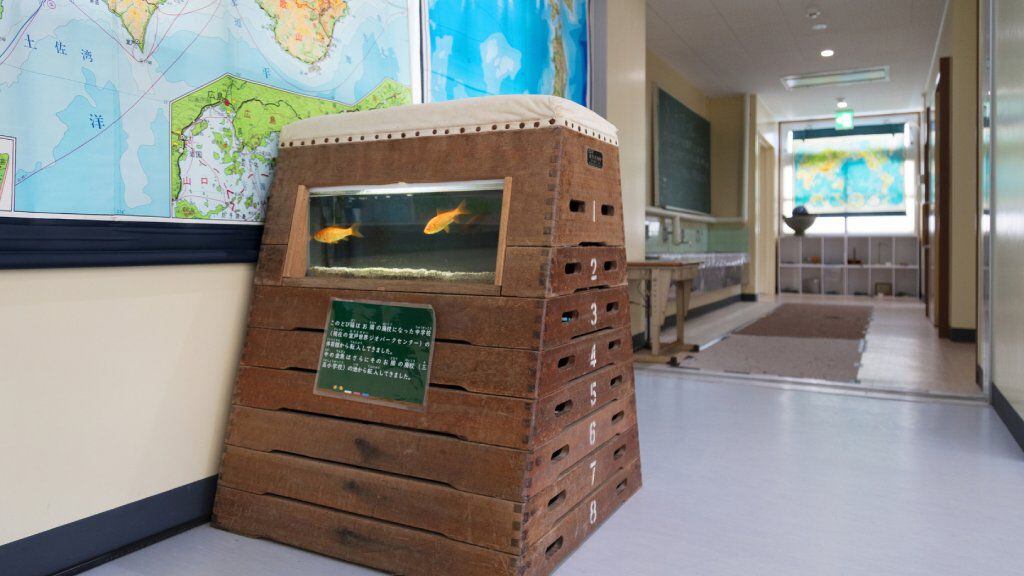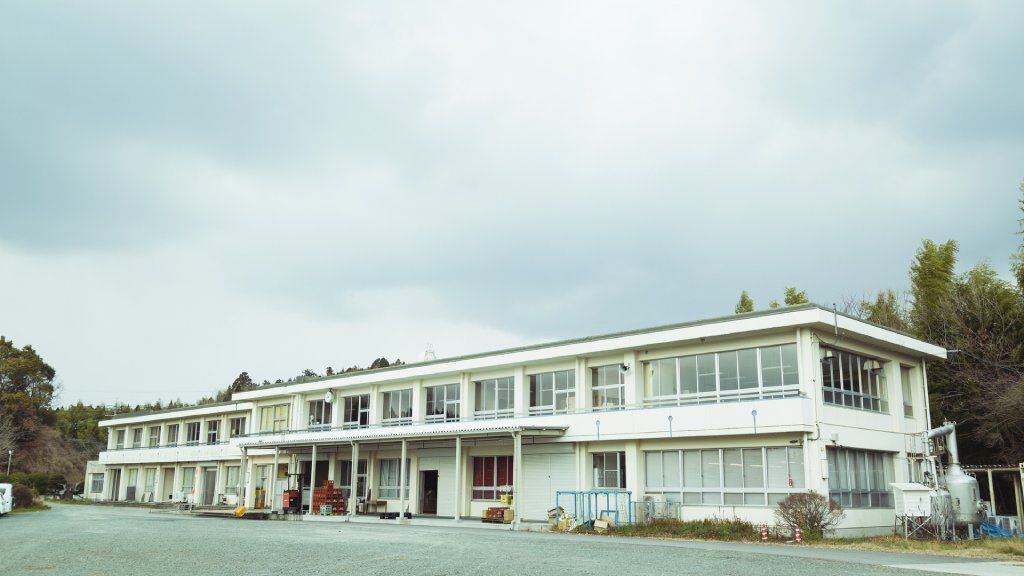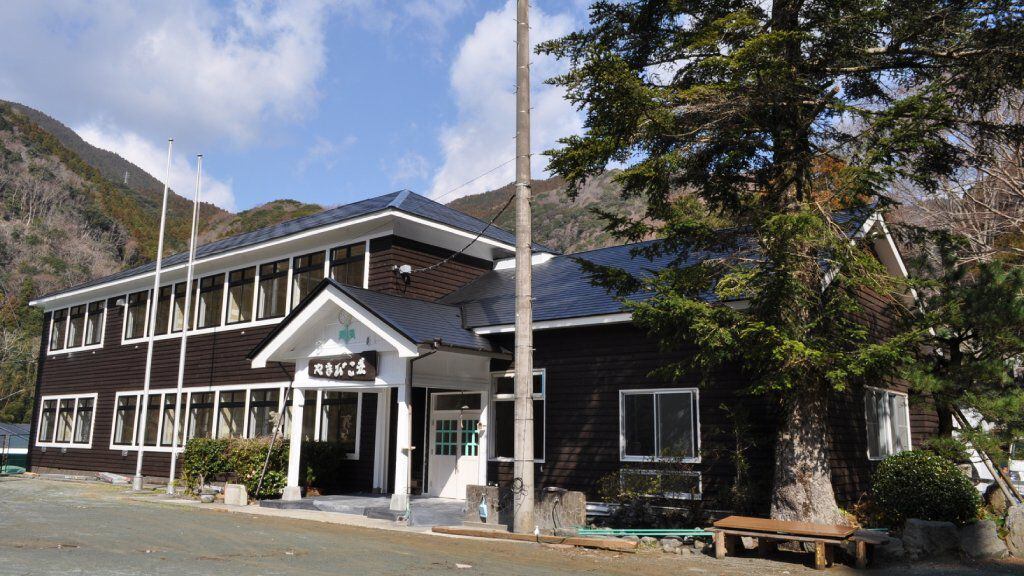The sharp drop in the birth rate in Japan it has led to the emptying of classrooms and the closure of an average of 450 public schools a year.
According to the Ministry of Education, Culture, Sports, Science and Technology (MEXT), 8,580 shogakko and chugakko institutions (equivalent to primary schools 1 and 2) ceased their activities between 2002 and 2021.
LOOK: Who was Messalina, the empress with the most scandalous reputation in Ancient Rome
Of the total, 74% still maintain school facilities, and around 5,500 are being used as community centers or surviving as hostels, art galleries, aquariums, and even sake breweries.
The rest of the closed schools remain unused due to lack of demand or due to deteriorating facilities.
The demolition is a painful decision for the Japanese, who assign to the school a role that goes beyond a place of study.
“They are the nucleus of the formation of the community”Takahiro Hisa, a professor at Kindai University’s Faculty of Applied Sociology, told BBC News Brazil.
“In Japan, the playground and gymnasium of elementary schools are often open during school breaks, holidays, and evenings to accommodate many community activities,” he adds.
In cases of natural disasters, such as earthquakes and typhoons, they are important places of refuge.
The importance given to the school environment is strong among the Japanese.
A study of urban development in immigration areas in southern Brazil by Tohru Morioka, then an assistant professor at Osaka University in Japan, found that cities occupied by Italian and German immigrants had churches as the center of the community. , while in regions of Japanese concentration, such as Registro, in the interior of São Paulo, this role fell to schools.

Challenge
Preserving that sense of community is a challenge for Japan today.
Through the “Closed Schools for All” project, implemented in 2010, the government tries to counteract the aging of the population and depopulation with regional revitalization, taking advantage of the role of schools and existing infrastructure.
“With the population in decline, the point is to make efficient use of available local resources, rather than building new facilities,” says Hisa.
In half a century, the number of students enrolled in elementary schools in Japan has halved.
Currently, there are around 9 million enrolled in primary schools (2.9 million in shogakko and 2.9 million in chugakko), and a network of 28,000 public schools for these levels.
The spikes occurred at two times in Japanese history:
- In 1958, when 40,000 public schools served 18.6 million primary school students (13 million in shogakko and 5.6 million in chugakko), children of the first baby boom (1947-1949).
- In 1981 there was another large increase in the student body with the arrival of the second generation of the baby boom (1971-1974).
Since then, the classroom occupancy rate has been declining.
Last year, for the first time, the number of births in Japan fell below 800,000, indicating that more schools will have their doors closed.
revive schools
Through a post on its website, MEXT provides information on school facilities closed by each local government, which is studying proposals from interested parties.
Permission to use the facilities is granted to operators who are committed to supporting the local community, promoting regional revitalization and generating employment.
Spaces such as classrooms, patios, gyms and even swimming pools are available, as well as service infrastructure (electricity, gas, sewage).
Although half of the public schools in Japan are over 30 years old, building a similar building from scratch would take time and cost a lot of money (1.3 billion yen, about US$9 million).
In the opinion of Professor Takahiro Hisa, the occupation of closed schools should not occur only for economic reasons.
There is a very strong emotional relationship between the residents and the buildings.
Reuse a school, which is a place of memoriesand creating a community space where people can come together is a significant initiative, he says.
The way these spaces are revived varies from region to region.
In the city of Shinshiro, in Aichi Prefecture, the Sugamori Elementary School cafeteria was transformed into a a restaurant serving dishes based on local ingredients.
The village of Nippaku in the northern province of Hokkaido, inhabited by 5,000 people, lost a century-old school in 2008 and won the Taiyo no Mori Museum.
It all started when art collector Isao Tanimoto purchased the building at the request of residents who wanted to revitalize the region.
In the old school, he left his private collection permanently on display with more than 200 works by French contemporary artist Gérard Di-Maccio, as well as 150 paintings by René Lalique (1860-1945).
At the other end of the Japanese archipelago, the city of Kikuchi in Kumamoto Prefecture, with a population of 46,000, won the sake brewery Bishones, on the site where Suigen Elementary School operated for 137 years.
On the outside, the building still looks like a school, but the inside is anything but. Steamers and coolers have been installed in the cafeteria, where rice is steamed in a tank called koshiki.
The principal’s office and nurse’s office, which had cedar-clad walls and ceilings, now function as the koji (mushroom enzyme) room, while huge tanks have been installed in the teachers’ lounge.


Filling and labeling lines run through the aisles.
According to the company, the unique structure of a school building, with rows of classrooms, helped improve the process of making the drink.
“The employees are originally from Kikuchi, and all the raw materials, water and rice, are from the region,” emphasizes the company, explaining the connection it maintains with the local community.
Another transformation took place in the fishing village of Muroto, in Kochi prefecture, where half of the 13,000 inhabitants are over the age of 65.
There, a primary school closed 17 years ago has become an aquarium to attract tourists to the region.
You’ll find hammerhead sharks and turtles swimming in the 25-meter outdoor pool, and 1,000 sea creatures from 50 species on display in themed tanks throughout the classrooms.
In Nishiizu, Shizuoka Prefecture, a school building closed after 65 years of use has become youth housing.
The school had 241 students at its peak in 1941 and only 45 enrolled when it closed in 1973. Revitalized as Yamabiko-soo, the school has not lost its main hallmarks of school.


alternative uses
The fate of each school is decided after listening to the community.
A former director of a public school in the city of Fujisawa, listed several possibilities to transform buildings, whatever their location.
Faced with the possibility of a strong earthquake occurring in the next 30 years in eastern Japan, as predicted by experts, he proposes to use school facilities to house temporary housing, storing supplies, and serving meals.
There are many other proposals to also address the challenge posed by the aging of the Japanese population: the forecast is to reach 2050 with 40% of the population made up of the elderly.
Abandoned schools that once served as a place of teaching and community gathering now try to follow the proverb “kishi kaisei” (which can be literally translated as “awaken from death, come back to life”).
That is, reborn from the ashes.
Source: Elcomercio
I am Jack Morton and I work in 24 News Recorder. I mostly cover world news and I have also authored 24 news recorder. I find this work highly interesting and it allows me to keep up with current events happening around the world.

:quality(75)/cloudfront-us-east-1.images.arcpublishing.com/elcomercio/XOBXSPOWRZEQXBUEVMHTHOPB7Y.jpg)

:quality(75)/cloudfront-us-east-1.images.arcpublishing.com/elcomercio/QDFA5LW6LNHTZDOAPORQ2KKM3E.jpg)
:quality(75)/cloudfront-us-east-1.images.arcpublishing.com/elcomercio/QKTDZ7M56JA5HFSCVK3MFOSFGA.jpg)
:quality(75)/cloudfront-us-east-1.images.arcpublishing.com/elcomercio/EPWSTDSR6RFANL6RN5AA2XIXMI.jpg)

